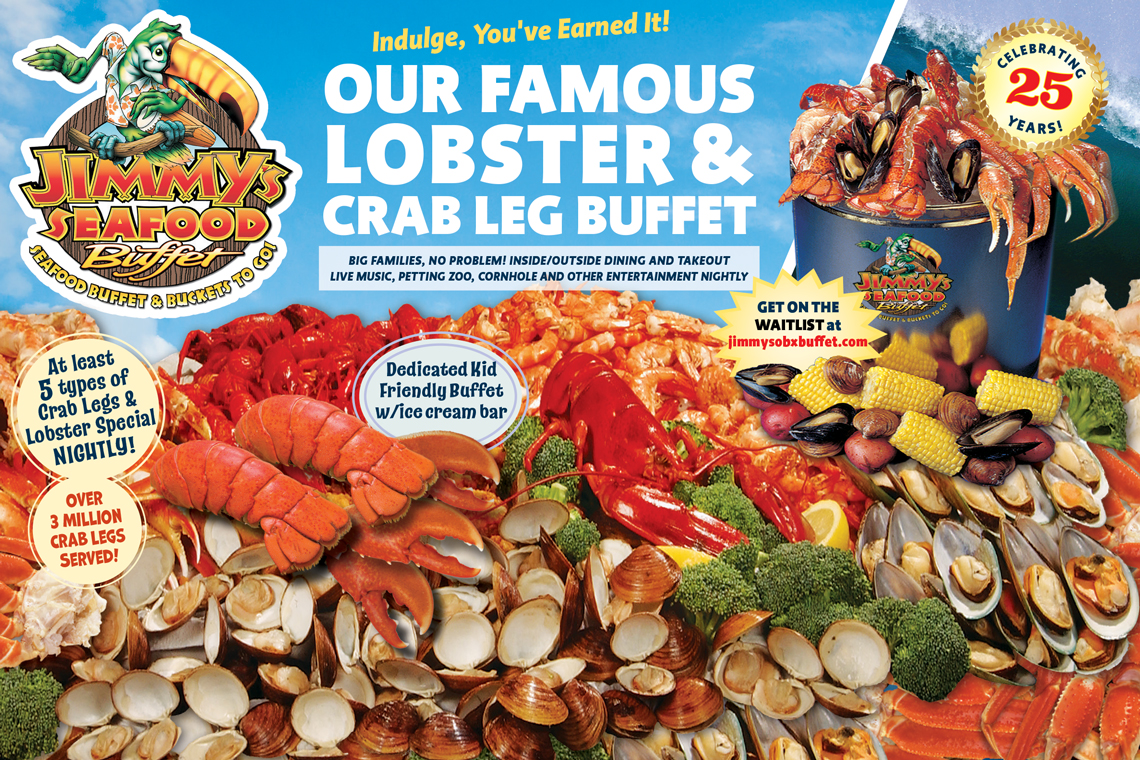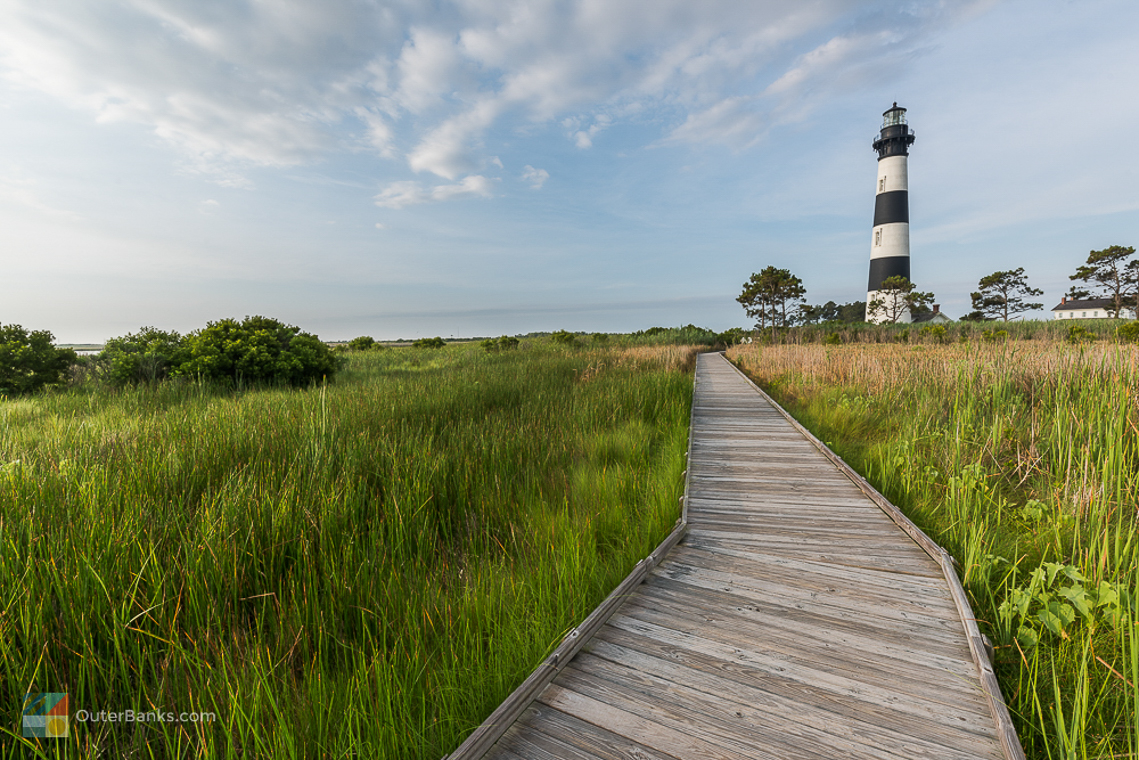Many newcomers are surprised to learn that some of the earliest visitors to the Outer Banks were not surfers, windsurfers, or even regular beach-goers, but hunters taking advantage of the area's exceptional waterfowl population.
That tradition carries on today, well over a century after the first hunters arrived on the barrier islands, and many off-season and shoulder season sportsmen carry out long expeditions to the Outer Banks to enjoy the same great hunting arenas that first enticed their predecessors. With acres of desolate landscape that is seasonally open to hunting, and a range of birds, deer, and small game that can be found, the Outer Banks is a generally little-known hunting destination that has a big following of die-hard fans.
If you're planning your next big fall or winter hunting trip, consider heading to the Outer Banks. With plenty of accommodations and miles of ground (and water) to cover, hunters are still as enthralled with the beaches and coastlines of the Outer Banks as they were over a century ago.

History of Hunting on the Outer Banks
Long before the surfers, kiteboarders, windsurfers and beach bums discovered the beauty and exceptional sporting conditions of the Outer Banks, hunters were frequent visitors and devout fans.
As early as the 1800s, after the Civil War conflicts and Union camps had dissipated from the beaches and locals were free to start new enterprises, ambitious residents began offering visitors "hunting guide services" throughout the Outer Banks. These first guide services were rugged and sparsely used, but nevertheless, locals would earn a nice side business of meeting with newcomers and taking them personally to the best hunting grounds along the sound and maritime forests.
Over time, this small band of hunting guides had attracted elite clientele who fell in love with the area and began building hunt clubs all along the beaches, and particularly in the northern Outer Banks region where the waterfowl hunting was truly unparalleled. After all, the two towns in the area were named after the abundance of fowl, specifically the town of "Duck," and neighboring "Corolla," which was deviated from the Native American name "Carotank", meaning land of the wild geese.
By the 1920s, hunting along the northern Currituck Banks was all the rage among the New York and New England jet set, and a handful of these regular visitors established large and exclusive hunt clubs to accommodate their hunting parties and their friends.
The most notable of these clubs, The Whalehead in Historic Corolla, still stands today and is one of the most popular Corolla attractions. Built in 1922 with construction completed by 1925, the club, which was a pet project of Edward Collings Knight, Jr. and his wife Marie Louise, was a veritable "mansion by the sea," with Tiffany lighting fixtures, corduroy walls, and over 21,000 square feet of living space. While it's certainly not the only original 1920s hunting club on the islands, (other notable clubs include a present day Corolla coffee shop and a Visitors' Center on Mackay Island Wildlife Refuge), it's considered the most prestigious, and one of the best standing examples of the popular Art Nouveau architecture of the period.
As the Great Depression flooded the country, with World War II close behind, the hunting clubs dwindled in stature with many abandoned or repurposed into new buildings. (The Whalehead in Historic Corolla, for example, became a boarding school after the Knights passed away.) Visitors still came to the Outer Banks to hunt, however, it was generally a secondary activity, with fishing along the fantastic beaches and the famous Cape Point on Hatteras Island becoming the primary attraction for vacationing sportsmen.
The sport of hunting continued to lose its luster as the Outer Banks transitioned from a desolate barrier island chain that a handful of adventurers visited to a bustling community of beach towns that were accessible to the family beach vacationing party. As the beaches became more popular, and watersports were introduced to the area, the majority of visitors and locals forgot that the Outer Banks began its popularity as an exceptional hunting destination.
Today, that secret is generally still hidden, and most vacationers would prefer to relax on the beach or take to the ocean waves than set off on a hunting trip. However, long-time visitors and locals still know that the Outer Banks is and has always been one of the best hunting destinations on the East Coast, and they're more than happy that the knowledge of this fact has more or less fallen off the map.
Types of Hunting on the Outer Banks
Hunters will find a variety of game on the Outer Banks, from mammals to birds, although generally the hunting on the OBX can be classified into three distinct categories.
Deer hunting is popular on the mainland and northern Outer Banks regions, particularly in the 8,000+ acre Mackay Island National Wildlife Refuge which is just a short ferry ride away from the Currituck mainland. Small game hunting is also allowed in this refuge and other neighboring refuges and reserves, and this type of hunting generally includes rabbit, squirrels, and other small mammals that can be found in the wooded regions of the coastline.
The most popular form of hunting, historically and today, is of course waterfowl hunting and this type of hunting is the most common along the Outer Banks. From Hatteras Island to the 4WD beaches of Carova, duck and waterfowl hunting is allowed in a variety of different regions, and hunters can expect to target up to 27 different types of species in these areas, including bluebills, Buffleheads, Redheads, Canvasbacks, Widgeon, and Pintail. Ducks, swans and geese are in abundance along the Outer Banks, as it is a significant location along the "Atlantic Flyway" national migration route that waterfowl take every year up and down the coastline.
With thousands of birds flocking to the coastal regions throughout the Outer Banks, the majority of hunters set out to enjoy the fantastic waterfowl hunting that the area is known and named for. If your hunting group members are due-hard duck hunters, it's hard to find a more fruitful and scenic locale than the Outer Banks.
Where to Hunt on the Outer Banks
Hunters will find they have ample regions to explore for prime hunting grounds, both on the land and on the water.
One of the most popular and longest-running avenues for Outer Banks waterfowl hunting is via a trip into the open water of the local sounds and bays, and hunters will find ample open water planes to explore throughout the islands.
One of the most popular regions is a section of Cape Hatteras National Seashore just north of the Pea Island National Wildlife Refuge and off the coast of Bodie Island. Here, hunters will find a number of rustic duck blinds peeking out of the open water, where they can station their boat and take aim at the number of waterfowl that flock to the region. The marshes and small islands just offshore are perfect hunting grounds, although hunters are advised to make sure they are within the permissible hunting regions. (Surrounding areas, like Pelican Island and the Pea Island National Wildlife Refuge are both closed to hunters.)
Waterfowl hunting is also popular in the region where it was originally made famous, the northern Outer Banks' and the Currituck beaches. A shallow draft boat is required for accessing the hunting grounds of the Currituck National Wildlife Refuge, but the reward is some exceptional waterfowl hunting that made the area popular with vacationers to begin with.
Small game and deer hunting is also allowed in the Mackay Island National Wildlife Refuge as well as the Kitty Hawk Woods Reserve, and hunters can expect to find deer and small game in both of the area's large regions of maritime forest.
Essentially, the best places to go hunting on the Outer Banks are the some of the least discovered and least visited regions of the coastline, accessible by boat or via a long walk from a state or nationally sponsored refuge or reserve. This makes hunting on the Outer Banks a wild expedition filled with miles of uninterrupted natural scenery, and hunters will love the thrill of having these areas veritably all to themselves, while feeling world's away from the rest of the more populated and developed Outer Banks.
Local Rules and Regulations for Hunting on the Outer Banks
Regardless of where on the Outer Banks a visitor decides to go, there are certain rules and regulations in place for hunting, and these vary by both types of game and by location.
The hunting season varies by game (waterfowl, tundra swan , duck and deer), as well as region, but is generally held for anywhere between three weeks and several months in the fall. October and November are the prime hunting season months, and are also some of the best times for deer and waterfowl hunting along the coastline.
A hunter must have a valid state hunting license, administered by the North Carolina Wildlife Resources Commission, before they can hunt along the Outer Banks. A permit can be obtained online via the NCWRC's website, http://www.ncwildlife.org/default.aspx, and hunters can also use the site to report a harvest, check up on local hunting seasons or obtain additional information on permit requirements and statewide regulations.
In addition to the state permit, many refuges, reserves and national seashores also require a second permit to hunt within the grounds. The most popular hunting locales, specifically the Mackay Island National Wildlife Refuge and its sister site the Currituck National Wildlife Refuge, the Kitty Hawk Woods reserve, and the Cape Hatteras National Seashore, all have application forms both at their local visitors' centers on the Outer Banks, and available for print online. Hunters should be sure and print these out and apply well before the hunting season begins, and multiple permits may be needed to access multiple refuges or reserves along the Outer Banks.
In some popular areas, like the Bodie Island region managed by the National Park Service and the Cape Hatteras National Seashore, a lottery may be held to grand a limited number of permits to a large number of applicants. Again, applicants are advised to read up on the individual organization's or refuge's website to see what obtaining a permit entails. Be prepared to have your license or state ID handy, as well as a little money as some regions request a small additional processing fee.
After hunting, visitors will also want to be sure and report their finds to the local refuge, seashore or reserve, and may also be asked to participate in an ongoing survey or study. These studies are instrumental to the maintenance and continuing conservation of the local Outer Banks refuges and reserves, and hunters are encouraged to participate.
Essentially, there are a few hoops to jump through to hunt along the Outer Banks, but that's true of virtually every area, and the process is painless and easy to accomplish either in person or online. The reward is access to some of the best hunting grounds on the East Coast in addition to helping the state and federal organizations that oversee the miles of undeveloped land manage the game supply, and provide ample hunting grounds for generations to come.
Guide Services for Hunting on the Outer Banks
Visitors who are new to the hunting scene on the Outer Banks, and who may be unfamiliar with both the permits required and the local terrain, can enlist the help of a local guide service, just like the first visitors did generations ago.
A number of local hunting guide services are still going strong, and are happy to take out newcomers to some of the best locations on the beaches for duck hunting, geese hunting and even swan hunting along the sounds and marshes. Guide services are available from the northern Outer Banks all the way to Ocracoke Island, ensuring visitors in every region can have access to a professionally guided hunting adventure. A number of these trips rely on inshore boats and skiffs to get to the best destinations, which means that hunters can easily enjoy a wide range of open water hunting, without bringing their own boat along.
A typical guided hunting trip entails an early morning meet and greet with the guide to narrow down the type of hunting available, and the best regions to go to. Then, it's on to the boat where the guide will ferry patrons to the optimal locations. This can change throughout the morning or full day, and hunters can expect to visit several locations in search of the best vantage point. Locales may entail small marshy islands, good vantage points from the water, or local duck blinds that are stationed in the sound waters. After that, it's all about the hunting, and experienced guides are happy to instruct newcomers on what to look for, where to place decoys, and how to retrieve their game once they have fallen into the water.
While decoys and transportation are provided, hunters are generally required to bring along their own guns, ammo, coolers for their games, and cameras to capture both their day's score, and the incredible views over the open Currituck or Pamlico Sound waters. In addition, hunters will want to make sure they bring along rain gear and waders to stay dry during the sound expeditions. Even though the Outer Banks climate is reasonably warm in the fall months, the open sound waters can still get a little chilly, especially for long periods of time.
Obviously, guided hunting trips are only available seasonally, and advanced reservations are strongly recommended considering the length of the season, and the demand for a local's first-hand knowledge and personal tour through the best waterfowl hunting grounds along the coastline.
Tips and Tricks for Hunting on the Outer Banks
- Visitors who come to the Outer Banks in the summer, and who may be interested in a fall or winter hunting trip, should do a little scouting to see what regions are available for hunting. This is also an exceptional time to stop by the local refuge, reserve, or National Park Service visitors' center for more information on permits required, and the type of hunting and areas available. With a little preparation, a long weekend in the fall when the hunting is in full swing will be no sweat.
- There are a number of accommodations available during the fall season, ranging from local motels and hotels to vacation rental homes. Hunters who are planning an extended stay of three nights or more should look into the vacation homes that are open in the later shoulder and off-seasons. Partial week stays are generally accepted in the off-season, with two weeks or less notice, and with rates falling with the temperatures, rental homes can be just as budget-friendly as a stay in a motel. Plus, vacation homes also feature kitchens and grills, ideal for cooking up the day's score.
- While a hunting party vacation is certainly a fun excursion, solo hunters should consider bringing their families along for a fall stay. The fall is one of the Outer Banks' least visited but most scenic time of the year, with ocean temperatures in some regions staying warm well into October. Turn a hunting trip into a full-fledged vacation, and enjoy discovering the quiet, but still wide open beach towns of the Outer Banks in the off season.
- Though mosquitos and biting flies are generally not an issue once the weather turns cooler, outdoors visitors will want to check for ticks after their hunting trip, especially if they are travelling through woody and marshy terrain. The same areas that attract deer naturally attract deer ticks, and maritime forest and marsh hunters should do a thorough check after their hunting day is done.
- Make sure you bring along the waterproof gear! Many of the region's best waterfowl hunting grounds are also the wettest, and it's not unusual for hunters to have to wade through 2'-3' feet of sound water to get to the best hunting spots in the local sounds or marshes. Waders are obviously the most helpful for such an adventure, and will guarantee that a hunter stays high and dry, and can concentrate on quietly waiting for the birds to fly by.
- Standard camo gear is appropriate on the Outer Banks, as despite some of the best waterfowl hunting locales being in or adjacent to the water, the best vantage points are along duck blinds or marshy areas where a hunter can stay hidden. Be sure and bring camouflage along, and if hunting without a guide, find a spot that blends in with the marshy grasses that is relatively out of sight of the planes of open sound water.
Hunting is arguably one of the Outer Banks' oldest sports, as it was around when the early Native Americans first populated the area, and was arguably responsible for the northern Outer Banks recognition as a rustic but gorgeous tourism destination.
As other sports have blown in, the lure of hunting has dissipated somewhat since its heyday in the 1920s, but nevertheless, loyal locals and visitors still flock to the region every fall to enjoy some of the best waterfowl hunting grounds on the East Coast. Quietly popular and enjoyed by only a handful of hunting experts who are in the know, the sport is nonetheless accessible for anyone who can squeeze in a weekend getaway in the fall.
If a couple days of exploring some of the most scenic and undiscovered terrain the Outer Banks has to offer, and enjoying waterfowl hunting that has made the region legendary, sounds right up your alley, then consider planning a hunting expedition to the Outer Banks. With moderate temperatures, budget-friendly accommodations, and plenty of restaurants and watering holes to share your stories, off season visitors will be happy to discover that after 100 years, the Outer Banks hunting scene is still going strong.










